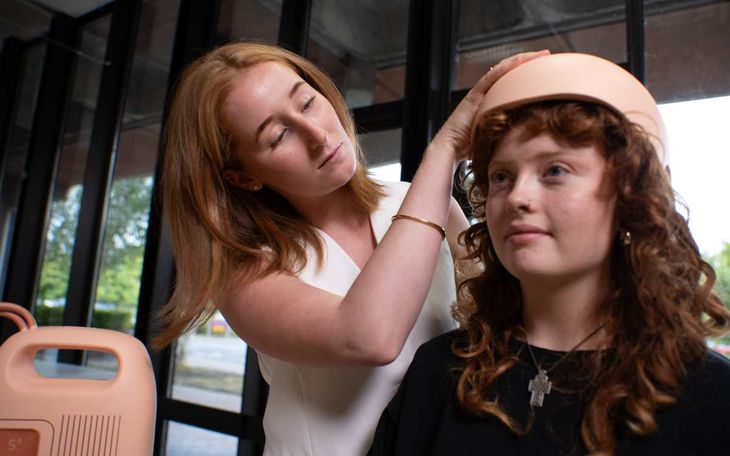A young woman created a product to alleviate the hair consequences of cancer treatments.
It is true that the Chemotherapy is one of the most effective treatments when it comes to fighting cancerbut it is also true that the consequences it generates on the human body are also harmful. One of them is the hair loss In any case, since health is more important than aesthetics, people are not going to stop undergoing dialysis for fear of losing their hair, but this young woman invented a solution.
The content you want to access is exclusive to subscribers.
Olivia Humphreys is a 24-year-old Irish woman with a talent for product design, and created Athenaa portable, lightweight and cheap device that won a major international medicine award. It works by cooling the scalp to reduce cellular metabolism and blood flow to the hair follicles, contributing to prevent hair loss.


Athena

How Athena came to be
The young inventor was motivated by experience of his mother, when she had to face cancer through dialysis, and the process led her to generate bodily reactions. It began as a simple cooling of the scalp to minimize hair loss as much as possible, a practice proposed by her that the mother accepted.
From then on, he studied all the difficulties and began to investigate. In addition, he continued visiting the hospital and consulting doctors and nurses, asking about things to improve in the treatment and about results after trying them. Finally, the technique consisted of circulation of a coolant liquid at a temperature of 4°C below zero. This reduces cellular metabolism and blood flow to the hair follicles.
“The base I used was a Peltier semiconductor system to cool the computer that I bought on Amazon and around it I gathered and connected a lot of things that I already had: a windshield washer pump, a battery that my father had in his garage and a suitcase from my mother to put it all together,” Olivia commented.
When will Athena be released?
At the moment, he has obtained a scholarship from Luminate Medical, a Startup from Galway (Ireland), who was developing a device with the same objective in parallel. Their idea is to move forward as quickly as possible so that the device is ready to go on sale to the public at the end of 2025, or at the beginning of 2026.
Source: Ambito




